|
Camp Kaitawa and Outdoor Education
|
|
Camp Kaitawa is a former H.B. Education
Board school building on the boundary of the Te Urewera National Park, and has been
used as an outdoor education facility for school groups since 1967. Over this 40
year period the Rotary Club of Taradale has made an outstanding contribution
towards the Camp. This has been in the form of people power, money, materials
and expertise of various members and their contacts. Work undertaken with the
assistance of Taradale Rotary includes the following.
-
Building an ablution block, woodshed,
store shed, covered way, toilet block,
-
4 new Chalets and adding a disabled toilet
area.
-
The wooden exterior windows have been
replaced with aluminium.
-
The dining room has been extended and the
kitchen completely refitted from the floor up.
The drying room and showers have received
major renovations and the exterior of the main building has been painted. The
tennis court fence has been replaced and a track cut to Lake Wherowhero to
enable the new canoes to be launched. The manger's house has been repainted and
the kitchen upgraded.
It is estimated that over 60,000 pupils and
many adults have gained outdoor experience at the Camp. In 1989 ownership of the
camp passed to the Ministry of
Education, and it is now administered by the Camp Kaitawa Trust which at 2005 included
Club members John Aikman, Brian Neilson, Clive Adams, David Drake.
The Camp is now sought after for use by
other community groups in non-school times. The rental from this helps keep the
costs down for schools. The camp depends for its survival on the ongoing support
of the Rotary Club of Taradale and the many members who so readily donate their
time and skills.
|
|
Early History
|
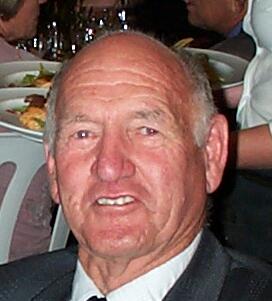 Originally known as the
Kaitawa Hydro School, Ronís first experience with it was as a teacher where he
taught with his wife Estelle for four years. In the early 1960ís, the
school was abandoned, and at this stage, 1965, Colin Walker, a science advisor with the
Hawkes' Bay Education Board, approached Ron with the idea the buildings be used for
Outdoor Education, a concept he had seen working
effectively at Port Waikato. At this time Ron was living and teaching in Wairoa and had been a member of the Wairoa
Rotary Club for two years. Ron was very enthusiastic and on taking up a position in
the Inspectorate, he used his position to determine the status of the buildings.
Phil Page, the Board Manager informed him the buildings were no longer required for
schooling and would shortly revert back to the Ministry of Works who owned them. |
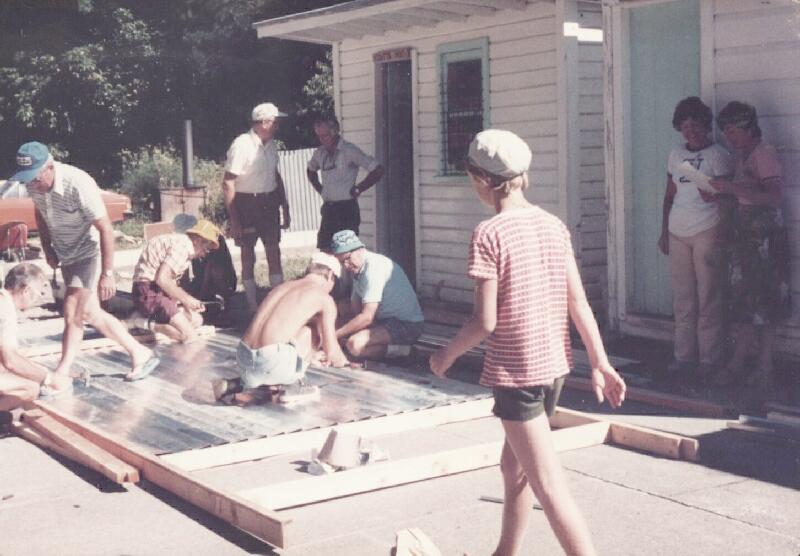
Photos in this this section were provided by Peter
Sugden, 1978.
|
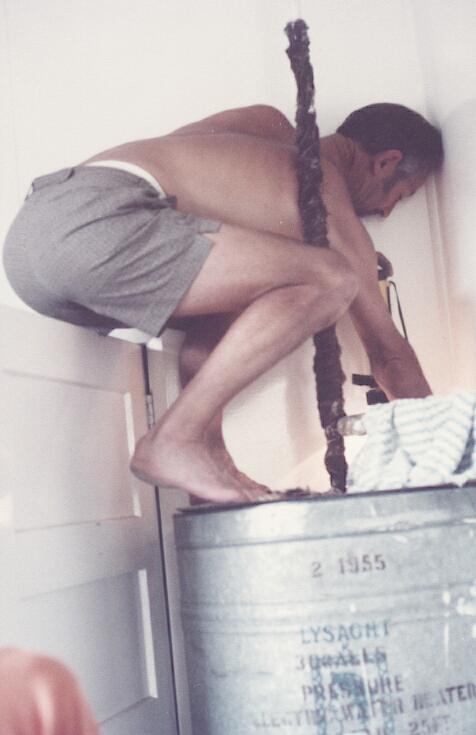
Greg Gear works on the water heater |
The MOW thought the buildings had been destroyed, but Ron
informed them that was not so, and that he had plans for them. They agreed with Ronís
proposal and said they would gift the buildings back to the MOE. Ron then took the full
proposal to the Ministry of Education who agreed with the concept but said they could
not fund it. With Colin Walker, Ron set up the first Camp
Kaitawa committee which included Bill Priest, Bill Coutts, Bert Rattray and Henry Bell. |
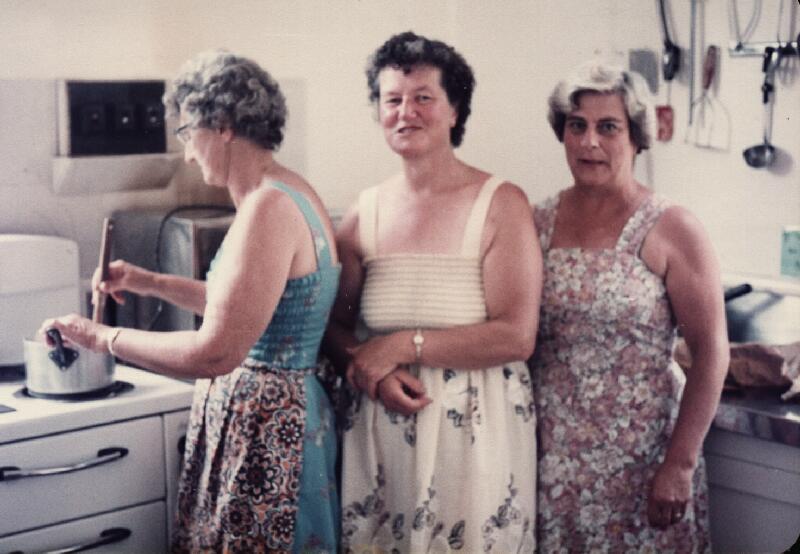
Shirley Gear (right) watches over Stella Stafford
(left) and Estelle Ward |
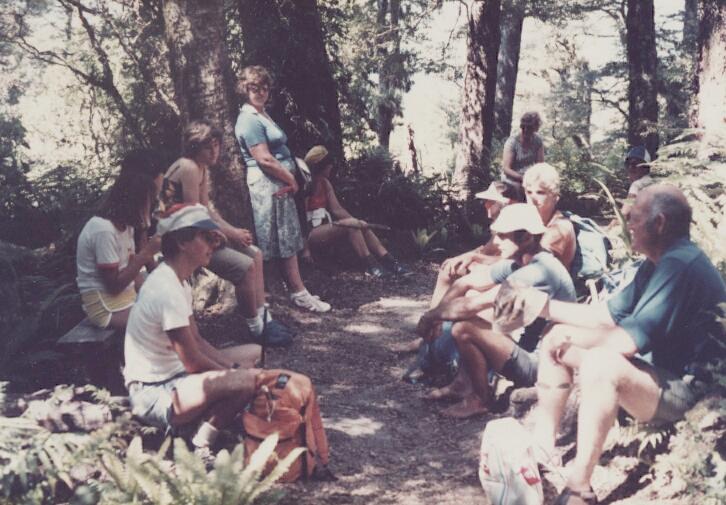
Ron's bush walks were very popular, particularly
with wives and children. |
In 1967 this group went up on the first working party
and converted the two classrooms into dormitories. They designed and built bunks which are
still in use 40 years later. The staff room and corridor was converted into a kitchen. To
furnish these, Ron, in his official capacity as an Inspector, had the task of closing down
a manual training centre in Gisborne. He organised tables, chairs, benches cupboards etc
to be stored at Kaitawa, where they eventually found their way into the new camp buildings. |
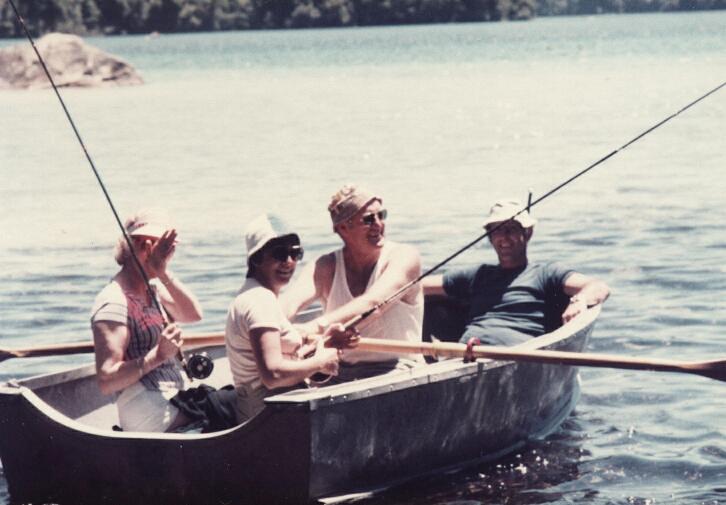
Recreation, particularly fishing, became a focal
point of the working weeks. |
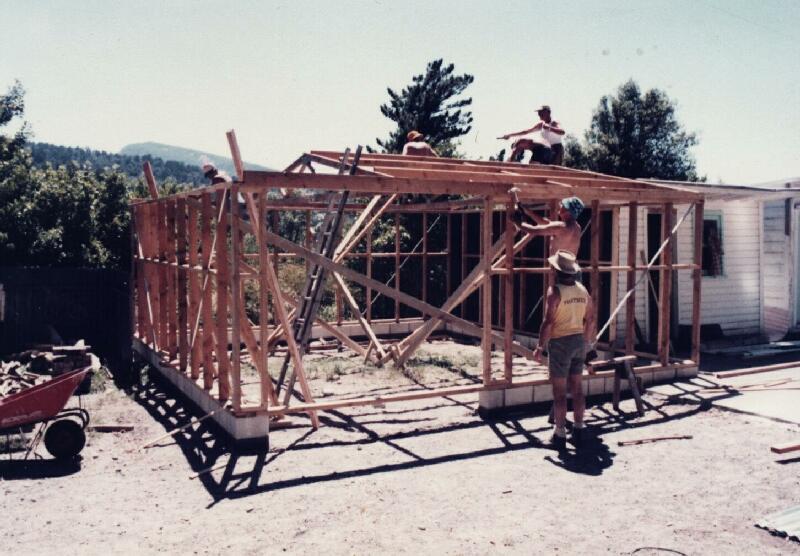
The storage garage takes shape |
To expand accommodation, 5 huts were acquired
off Carter Holts for £100. Pettigrews agreed to transport them back from
Tarawera, and the committee plus additional teachers, worked at painting and
reassembling them at the Camp. Two were named after members
of the original committee. |
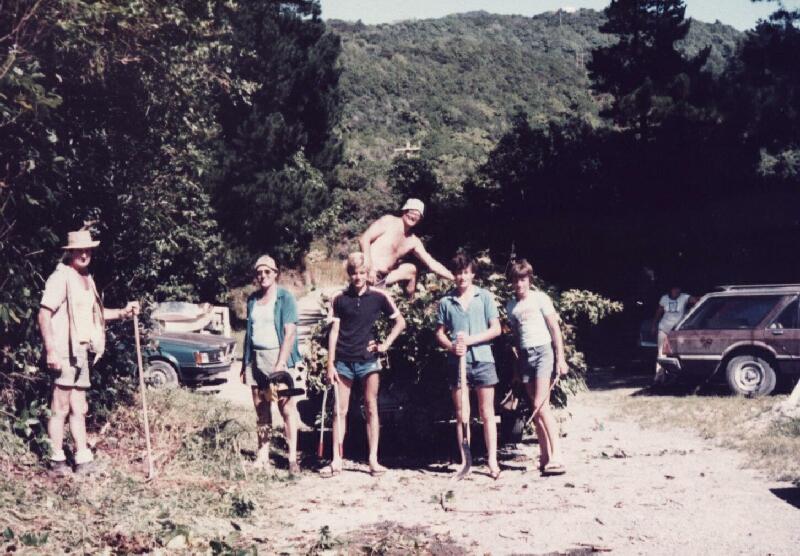
Ron Ebbett and Peter Sugden looking please with a
mornings work |
|
In
late 1967, the first class was held. A group from Napier Intermediate, led by teacher
John Davidson, gave the camp a trial run, and following that the demand for the Camp was
so great, it was occupied right through the year. Colin Walker managed the Camp, and he
arranged for a wife of a hydro worker to be camp custodian. With the support of
Past-President, Dr. Mike Davies, Ron drummed up financial support with a number of
Rotary Clubs making donations.
The active involvement of the Taradale Rotary
Club started at this time, and the first of the annual working holidays
started in 1968, which Arthur Stafford organised.
|
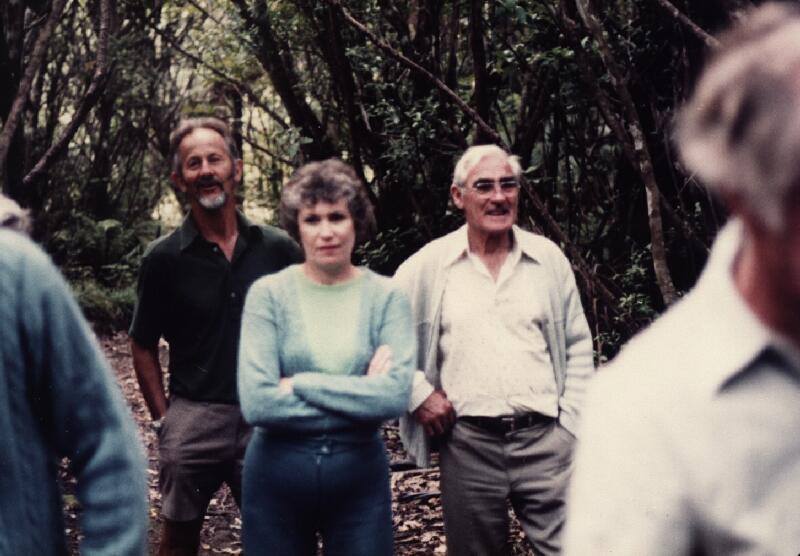
Greg Gear and Mac MacClmont on a walk |
The demand for Outdoor Education was such that Ron and
his team initiated the setting up of two more camps at Tutira and Wakarara (built by the
Waipawa Rotary Club). Each camp has to date catered for upwards of 60,000 youths and all
are still operating.
|
-
The first mention of Camp Kaitawa as far as the
Club was concerned, appears to be an entry from the Bulletin of May 1967.
"We heard a very interesting talk by Ron
Ward, one of our own members, who described to us a "New Idea in
Education". This is outdoor education for school children. Thirty five miles north of Wairoa, near
Waikaremoana, is Camp Kaitawa. This consists of a derelict, but sound, school,
surrounded by native bush on the one side, and open scrub country with a
nearby lake. The ideal headquarters for a group of about 40 children to spend
a week or so of their schooling in the outdoors. What an opportunity to learn
bush-craft, camping outdoor survival, and just to appreciate our lands natural
beauty, rather than to destroy it. An education committee has been set up and
working bees have been busy already. Finance is needed, also tents, blankets,
pillows etc. This camp will be open to all schools in Hawke's Bay during the
Summer terms. The vote of thanks was proposed by Jock Morris, who
voiced our opinion that this is a most worthwhile scheme."
On the 9th November, 1967, the
Bulletin reported that Ron Ward reported that "its off the ground. Wairoa Club (Ron's
previous Rotary Club) is pouring ablution block foundations this week-end. All
Clubs are being asked to express their interest."
-
In April 1968, Jack
Lockyer reported to Directors that his committee supported continuation of
the project, this being evidence of growing support within the Club.
By September 1968, the Club appears to have embraced the concept as a project
worthy of support because the Directors minutes record their support for the Vocational committee to supply the
ablution block for the Camp. $25 was received from Napier Rotary to support
the project. This project was eventually successfully completed with labour
input from members plus financial contributions from other clubs. This was the
start of the annual working parties to the camp over the Christmas holidays.
|
|
